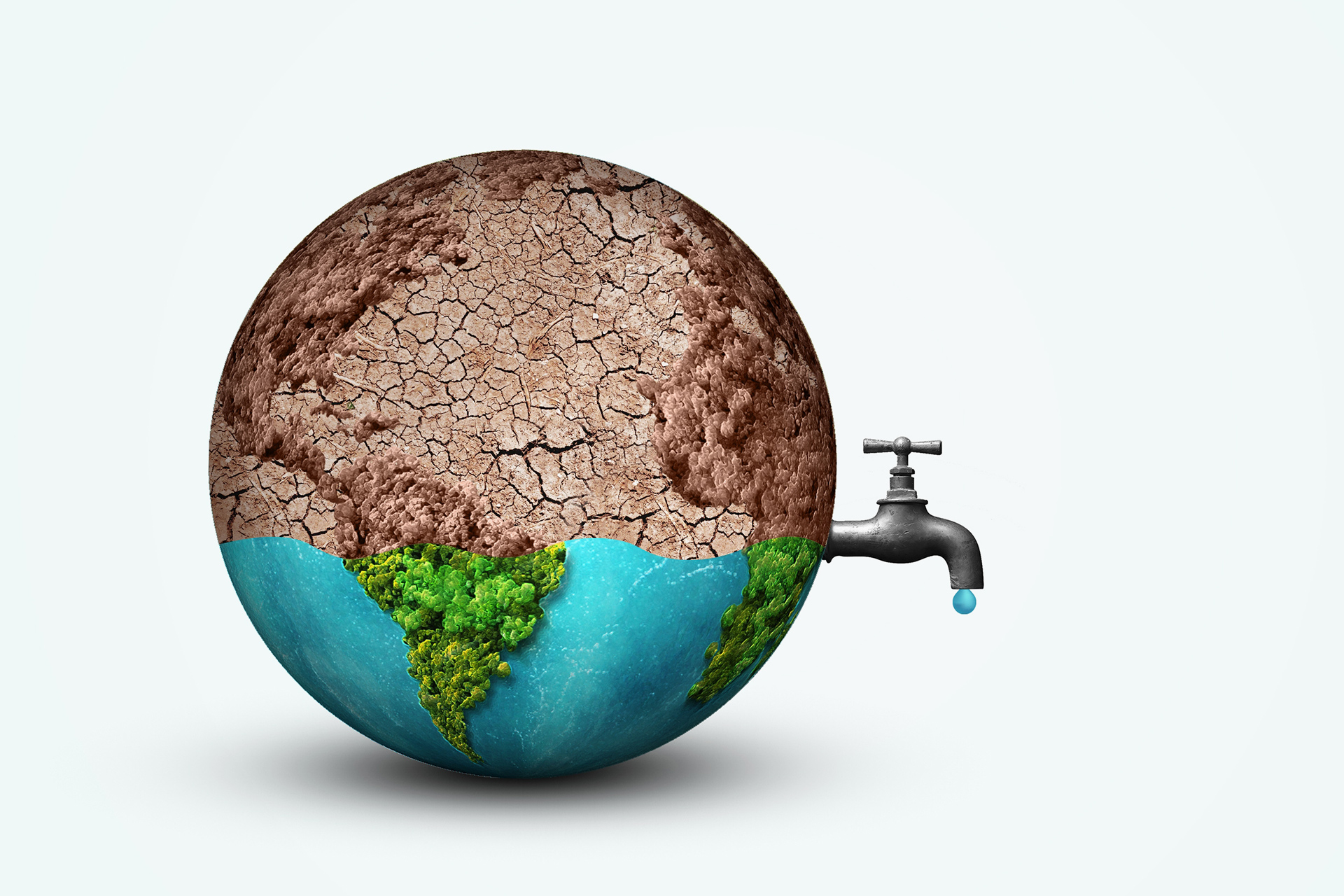Researchers from the Vienna University of Technology (TU Wien) say their new analyzes point to expectations of a more severe water crisis than previously thought.
It is expected that a number of regions of the world will witness significant water supply crises by 2050, due to the effects of climate change on the atmosphere.
Climate model analysis
According to the university's press release, the researchers' data analyzes revealed that previous models were systematically underestimating water availability projections according to changing climatic parameters.
The statement said that the study, which was published in the "Nature Water" journal recently, collected measurement data from more than 9,500 rivers and water bodies from all over the world, and found that climate change could lead to local water crises that are more serious than thought. Previously, it showed the relationship between precipitation and the amount of water in rivers, which has become more affected by climate changes, which is reflected in the water supply.
The researchers called for the need to review models for predicting the effects of climate change on water supplies mainly, as climate change works to change the global atmosphere, which in turn changes precipitation and evaporation in large parts of the world, and thus affects the amount of river water that can be used locally. .
Researchers called for a review of models for predicting the effects of climate change on water supplies (Shutterstock)
The effect of climate change on the atmosphere
The leader of the research team, Professor Gunter Bloeschel, from the Institute of Hydraulic Engineering at the Vienna University of Technology, explains, "As is known in climatology, there are effects that occur on the atmosphere due to climate change, and these effects that occur have repercussions and consequences for rivers and the availability of water. Where the clear overlap between what is mentioned in climatology and hydrology, or what is known as hydrology and water resources management, should be taken into account, and therefore it is necessary to know how the availability of water relates well to external criteria, such as precipitation or temperature.
Bloeschel adds, "Such studies related to hydrology and the influences of weather and climate are carried out in many measurement stations around the world, especially in laboratories specialized in hydrology, including our laboratory in Austria, where there are many sensors, but global conclusions cannot be drawn by these individual observations." That is, in one country or one region, and generalize it to the rest of the countries, as the water balance that depends on external factors varies from one place to another.
So, Ploeschel collaborated with scientists from China, Australia, the United States and Saudi Arabia to build and analyze a large database of water flow observations from around the world, with time series spanning several decades into the past.
The interaction between the water system and climate change is not supposed to rely on model analysis, but on actual measurements (Shutterstock)
more severe than expected
Gunther Bloeschel asserts that "the interaction between the water system and climate change should not rely on the analysis of hypothetical models, but on actual measurements, and the amount of change in the amount of water available in the past should be taken into account, when external conditions changed. In this way we can know The extent to which changes in climate parameters and factors correlate with changes in local water availability allows us to make predictions for a warmer climate future.”
The results of the research team showed that the new data predicts a significant increase in the risks of water supply crises by 2050 than previously assumed, especially in Africa, Australia and North America.

